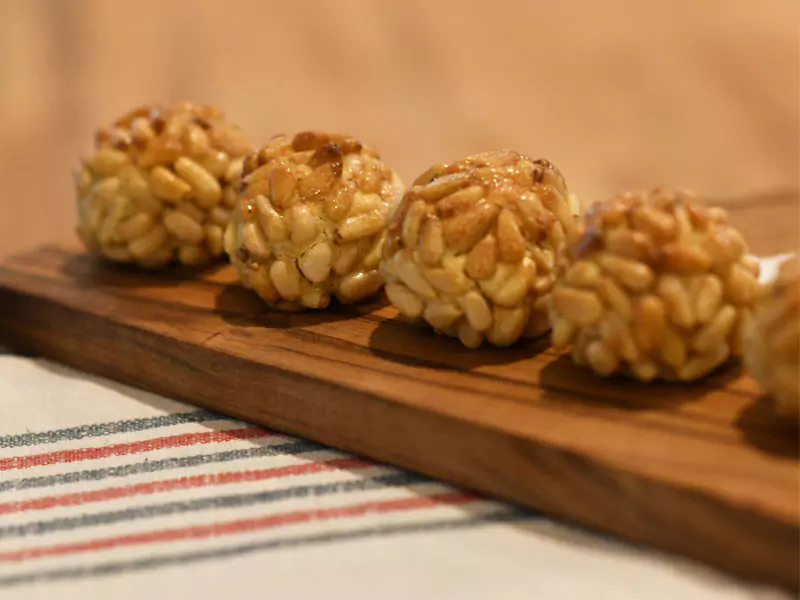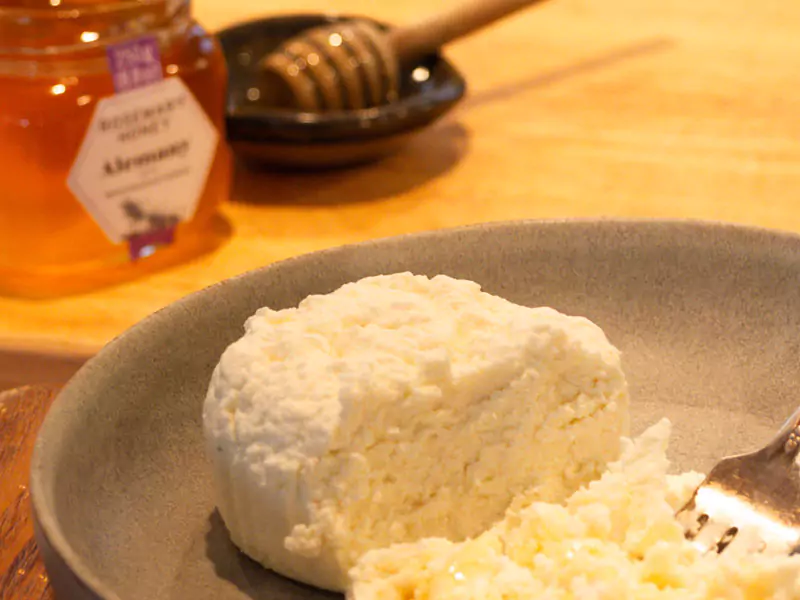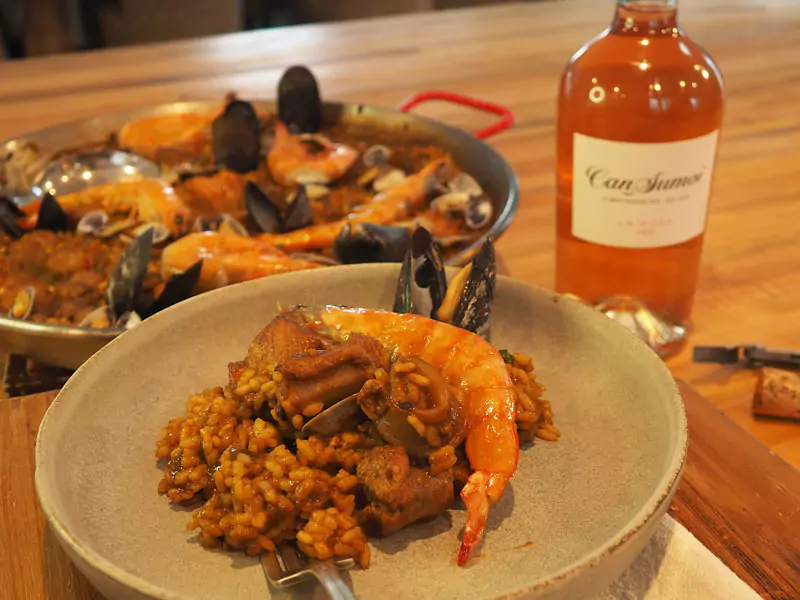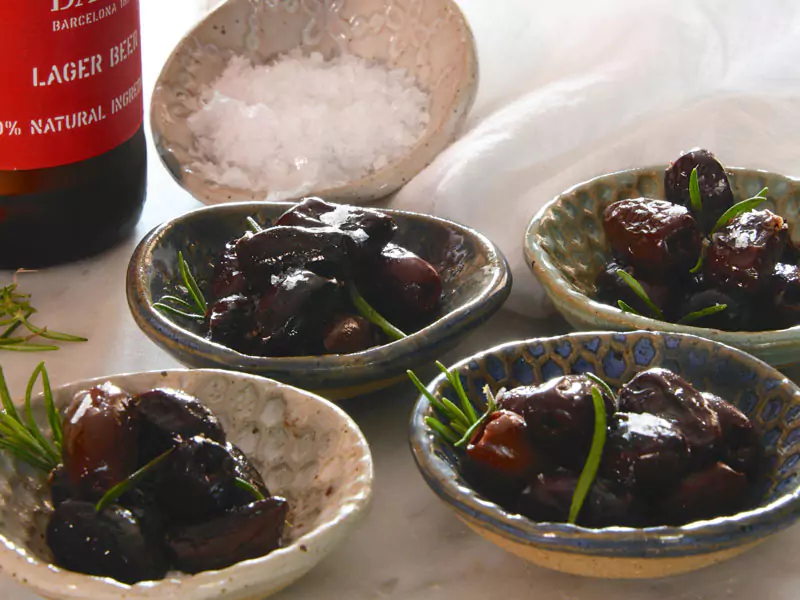Like many other Catalan pastries, panellets are associated with a specific religious holiday; in this case, it’s All Saints’ Eve, on October 31st.
Panellets rolled in pine nuts may be the most traditional variety, but there are also many others. The marzipan dough serves as the base for almost all of them, and you need only add ingredients that will give the dough your desired taste. For instance, some panellets are stuffed with quince paste, some are rolled in sliced almonds, and there are those flavored with coffee, lemon, coconut, or strawberry, too. It’s delightful to see all of the varieties arranged on the same platter.
TRADITIONS
LA CASTANYADA
During the eighteenth century, much like today, the Chestnut Festival, or la Castanyada, would take place on All Saints’ Eve. To celebrate, family members would gather for a meal in remembrance of their deceased loved ones, a meal reminiscent of those once prepared for funerals. After dinner, they would eat fire-roasted chestnuts as well as panellets served alongside either white or dessert wine; in cities they drank Sitges’ popular Malsavia wine, while those in the countryside would drink white wine or mistela.
La Castanyada is still a popular tradition in Catalonia, and a reason to come together as family and friends. Sadly, the American tradition of Halloween is slowly overshadowing the tradition in many Catalan households. Many of us keep celebrating the festival, and explaining to our children and grandchildren that losing our traditions also means losing our identity, and that it’s important that all countries keep their histories alive.



